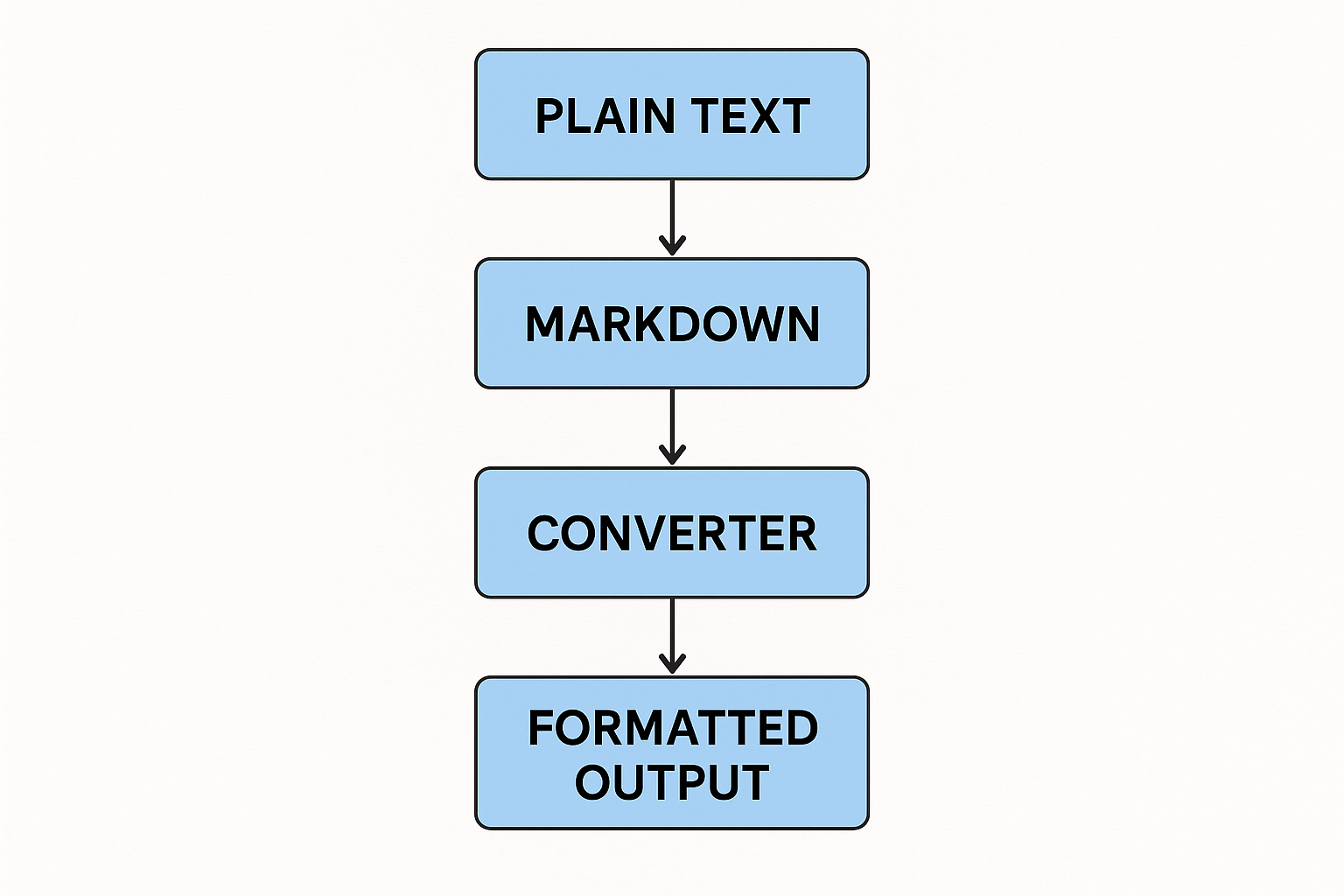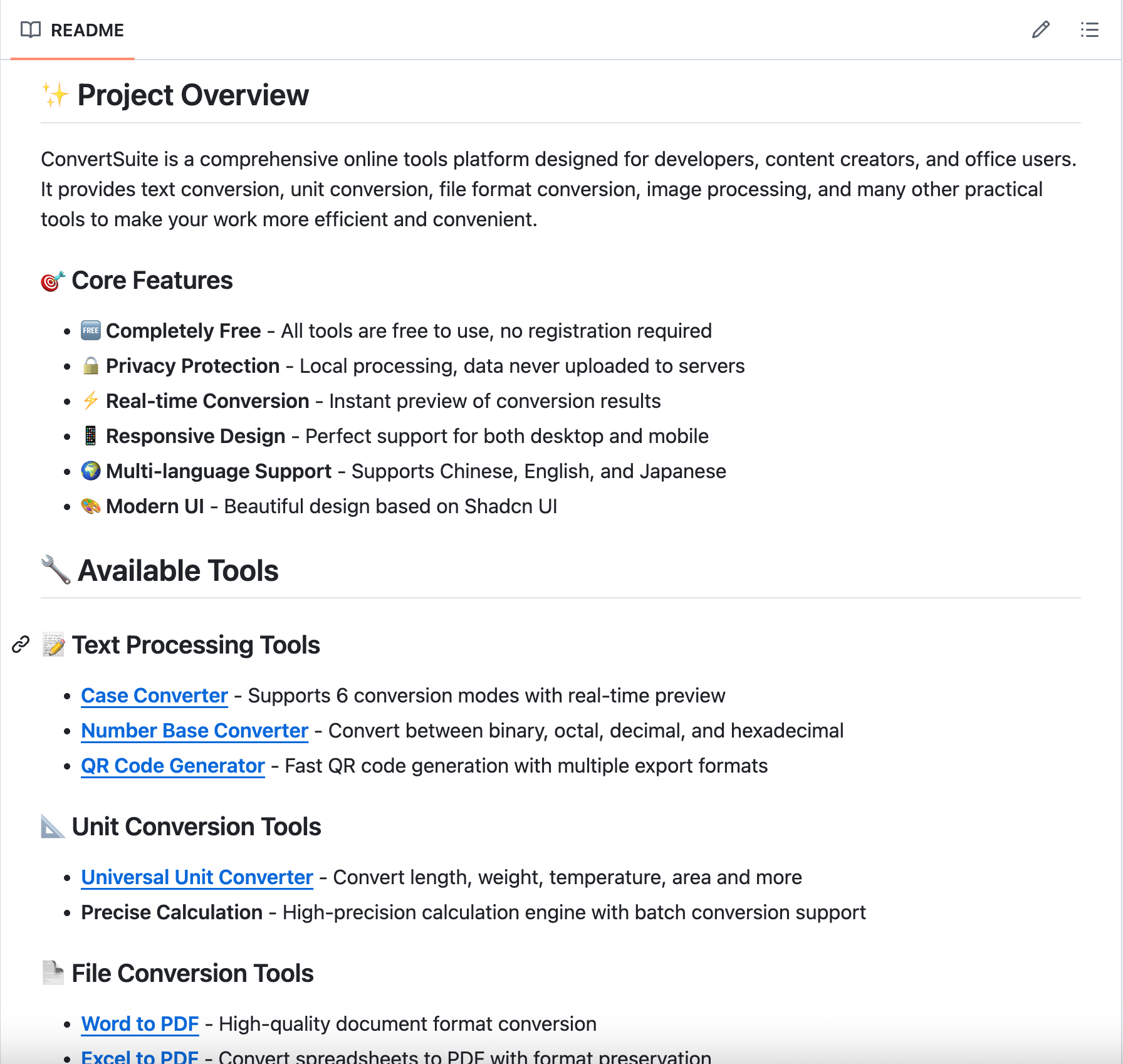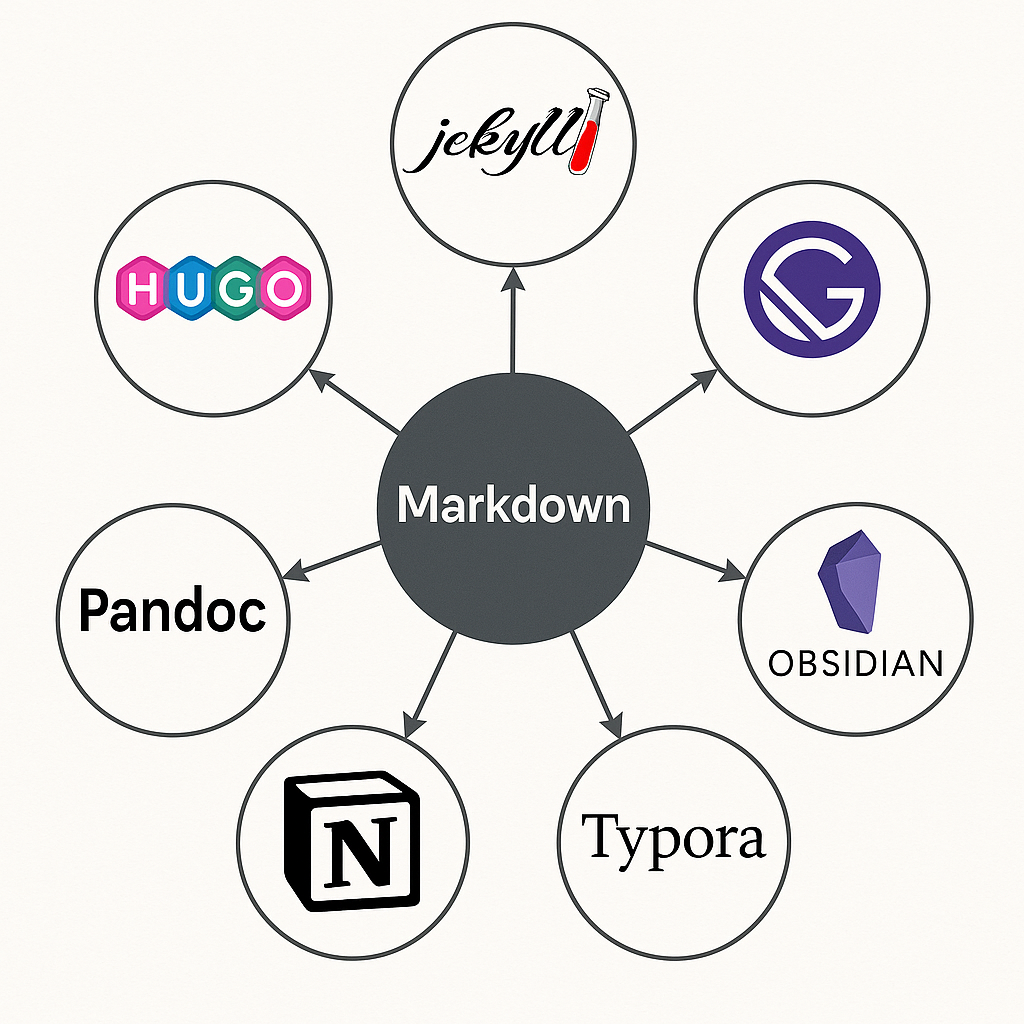What is Markdown? A Markup Language That Changes How We Write

In the world of digital writing, a simple yet powerful language is quietly changing the way we create and share content. That language is Markdown—a lightweight markup language that allows anyone to easily create formatted text.
What is Markdown?
Markdown is a lightweight markup language designed for creating formatted text using a plain-text editor. Unlike traditional “What You See Is What You Get” (WYSIWYG) editors, Markdown uses simple punctuation to indicate text formatting, allowing writers to focus on the content itself, rather than complex formatting settings.
Simply put, Markdown is like a “shorthand for writing”—you use simple symbols to tell the computer: “this should be a heading,” “this should be bold,” or “this should be a link.” This marked-up plain text can then be converted into various formats, such as HTML, PDF, Word, and more.
 *The conversion process of Markdown from plain text to formatted output*
*The conversion process of Markdown from plain text to formatted output*
Historical Origins
The Founder’s Vision
Markdown was created in 2004 by American tech writer John Gruber. Interestingly, he didn’t complete this work alone—the famous internet activist Aaron Swartz participated as a “sounding board” in the project’s development.
John Gruber’s original goal for creating Markdown was simple: to enable people to write using an easy-to-read, easy-to-write plain text format, with the option to convert it to structurally valid HTML or XHTML.
Design Philosophy
The core design philosophy of Markdown is readability. Unlike “heavyweight” markup languages like HTML, RTF, or wikitext, Markdown aims to keep the text readable even in its raw, unconverted state. You won’t see a screen full of tags and formatting commands, but rather text that is close to natural language.
This design philosophy was inspired by conventions for marking up plain text in early emails and Usenet posts, as well as early markup languages like setext (c. 1992), Textile (c. 2002), and reStructuredText (c. 2002).
Core Features of Markdown
1. Simplicity
Markdown’s syntax is extremely simple. For example:
- Use
#for headings - Use
*or**for emphasis - Use
[text](link)for links
This simplicity makes the learning curve very low; anyone can master the basic syntax in minutes.
 *Markdown syntax vs. HTML syntax comparison - the simplicity is clear at a glance*
*Markdown syntax vs. HTML syntax comparison - the simplicity is clear at a glance*
2. Readability
Even unprocessed Markdown text is highly readable. This means people can easily understand the structure and content of a document without special editors or conversion tools.
3. Platform Independence
Markdown uses a plain text format, which can be opened and edited on any operating system with any text editor. This platform independence ensures the long-term accessibility of documents.
4. Conversion Flexibility
Markdown documents can be easily converted into multiple formats:
- HTML web pages
- PDF documents
- Word documents
- LaTeX papers
- Presentations
- E-books
Development and Standardization
Diverse Development
As Markdown grew in popularity, various implementations began to appear. Developers added features like tables, footnotes, and definition lists to meet different needs. However, this diversity also created a problem—different Markdown parsers could produce different results.
The Birth of CommonMark
To address the standardization issue, a group of developers, including Jeff Atwood and John MacFarlane, began a standardization effort in 2012. In 2014, they released CommonMark—a clear specification and test suite for Markdown.
The goal of CommonMark is to create a clear, compatible, and comprehensively specified version of Markdown, while maintaining compatibility with the original.
Well-Known Variants
Several Markdown variants exist today, with the most famous being:
- GitHub Flavored Markdown (GFM) - The version used by GitHub, which supports tables, code blocks, strikethrough, etc.
- Markdown Extra - Adds features like tables, footnotes, and definition lists.
- MultiMarkdown - Supports more formatting options.
- Pandoc Markdown - Supports features for academic writing.
Wide Range of Applications
Technical Documentation
Markdown is widely used in the technical field:
- Open Source Projects - Almost all GitHub projects use Markdown for their README files.
- API Documentation - Many companies use Markdown to write technical docs.
- Tech Blogs - Technical blogging platforms widely support Markdown.
 *Example of a Markdown README file in a GitHub project*
*Example of a Markdown README file in a GitHub project*
Academic Writing
- Academic Papers - Combined with tools like Pandoc, it can generate formats required by various journals.
- Course Notes - Students and teachers use Markdown to record and share knowledge.
- Research Reports - Researchers use Markdown to write reproducible research reports.
Content Creation
- Blogging - Many blogging platforms natively support Markdown.
- Online Documentation - Companies use Markdown to create user manuals and help documents.
- Instant Messaging - Some communication apps support Markdown-formatted messages.
Why is Markdown So Important?
1. It Lowers the Barrier to Writing
Markdown eliminates the hurdle of complex formatting, allowing writers to focus on content creation. You don’t need to learn complex HTML tags or be familiar with cumbersome word processing software.
2. It Improves Collaboration Efficiency
Because Markdown uses a plain text format, it naturally supports version control systems (like Git). This means multiple people can easily collaborate on the same document and clearly see the specific changes in each revision.
3. It Ensures Content Longevity
Unlike formats that depend on specific software, Markdown documents can be opened and edited in almost any environment. Even 20 years from now, you’ll still be able to open your Markdown files with the simplest text editor.
4. It Promotes Knowledge Sharing
The simplicity of Markdown lowers the technical barrier to sharing knowledge. Whether it’s a programmer sharing code experience or a scholar publishing research, Markdown provides a universal and easy-to-understand format.
The Modern Markdown Ecosystem
Today, Markdown has far exceeded John Gruber’s original vision. It’s not just a markup language, but a complete ecosystem:
- Editors - From simple text editors to professional Markdown editors.
- Conversion Tools - Such as Pandoc and our own Markdown To PDF.
- Static Site Generators - Like Jekyll, Hugo, Gatsby, etc.
- Note-Taking Apps - Such as Obsidian, Notion, Typora, etc.
- Documentation Platforms - Like GitBook, Gitiles, etc.
 *Major tools and platforms in the Markdown ecosystem*
*Major tools and platforms in the Markdown ecosystem*
Conclusion
The success of Markdown is not just due to its technical features, but because it embodies a design philosophy: simplicity is more valuable than complexity. In a world full of complex tools and formats, Markdown reminds us that sometimes the simplest solution is the best.
From a simple idea in 2004 to a standard that affects millions of users worldwide today, Markdown has become more than just a markup language; it represents a philosophy of making technology serve human creativity.
Whether you are a programmer, scholar, writer, or anyone who needs to create text content, Markdown is worth learning and using. It might change your perspective on writing and help you rediscover the power of words.
Want to experience the power of Markdown? Try our Markdown conversion tools to easily convert your Markdown documents into various formats!